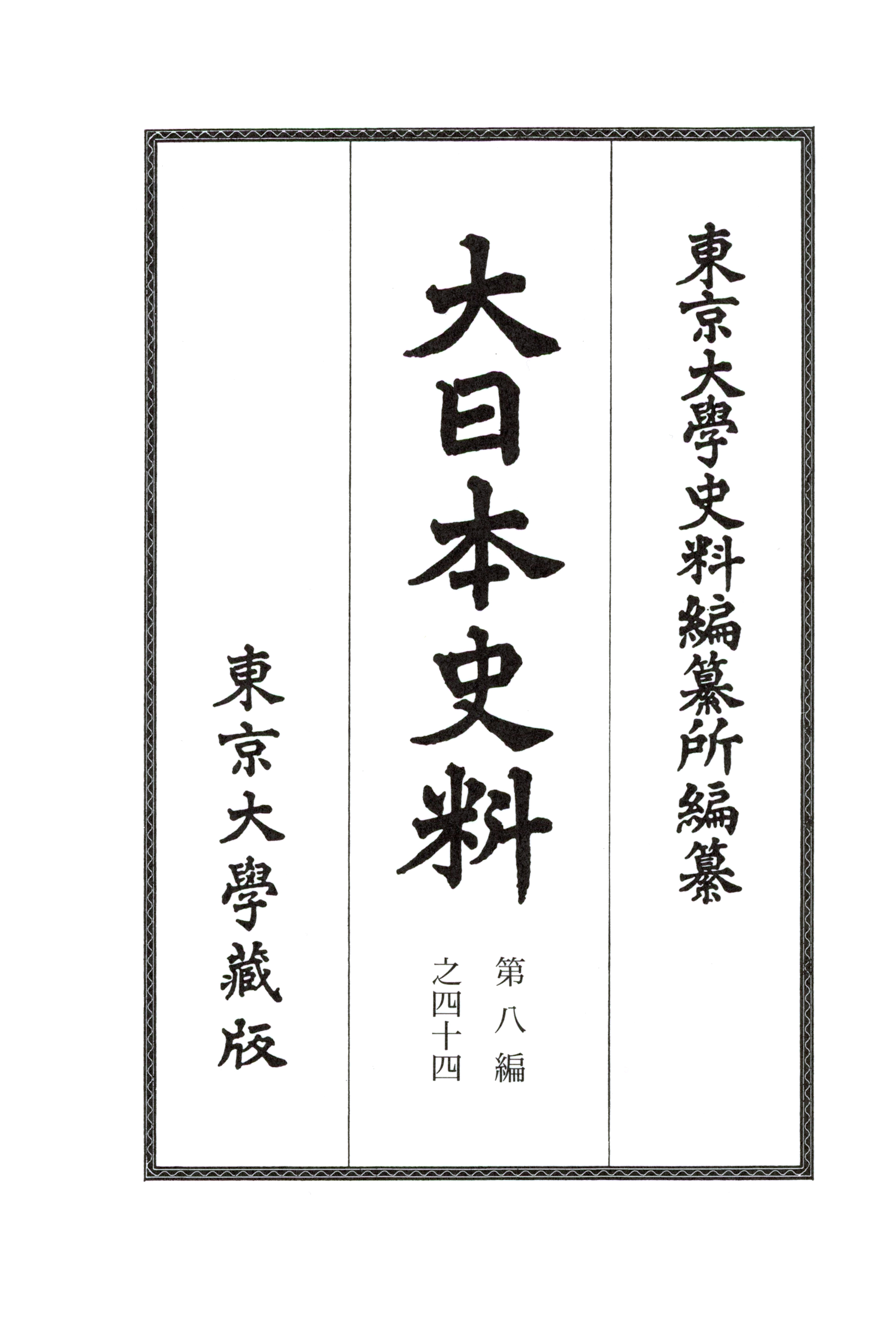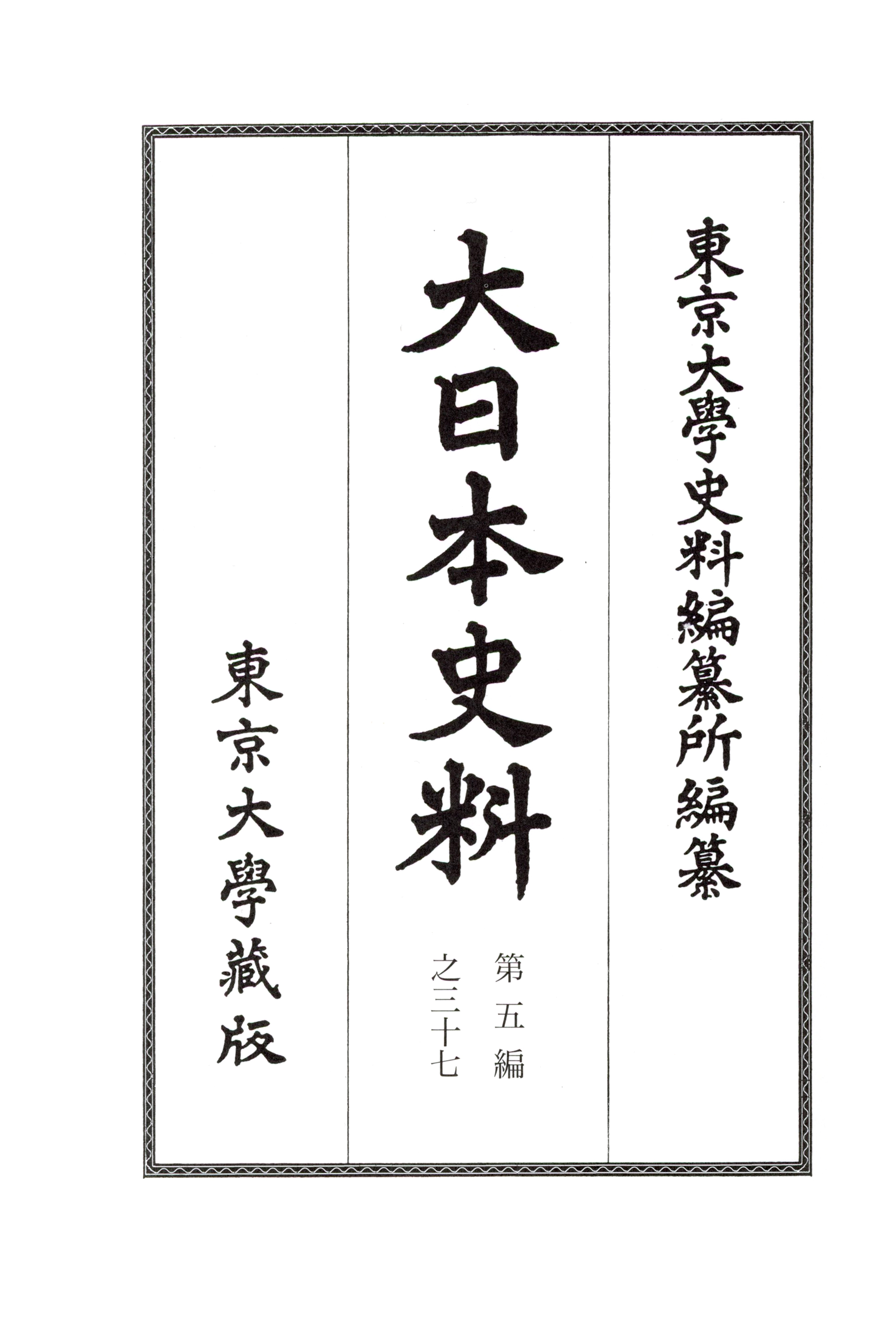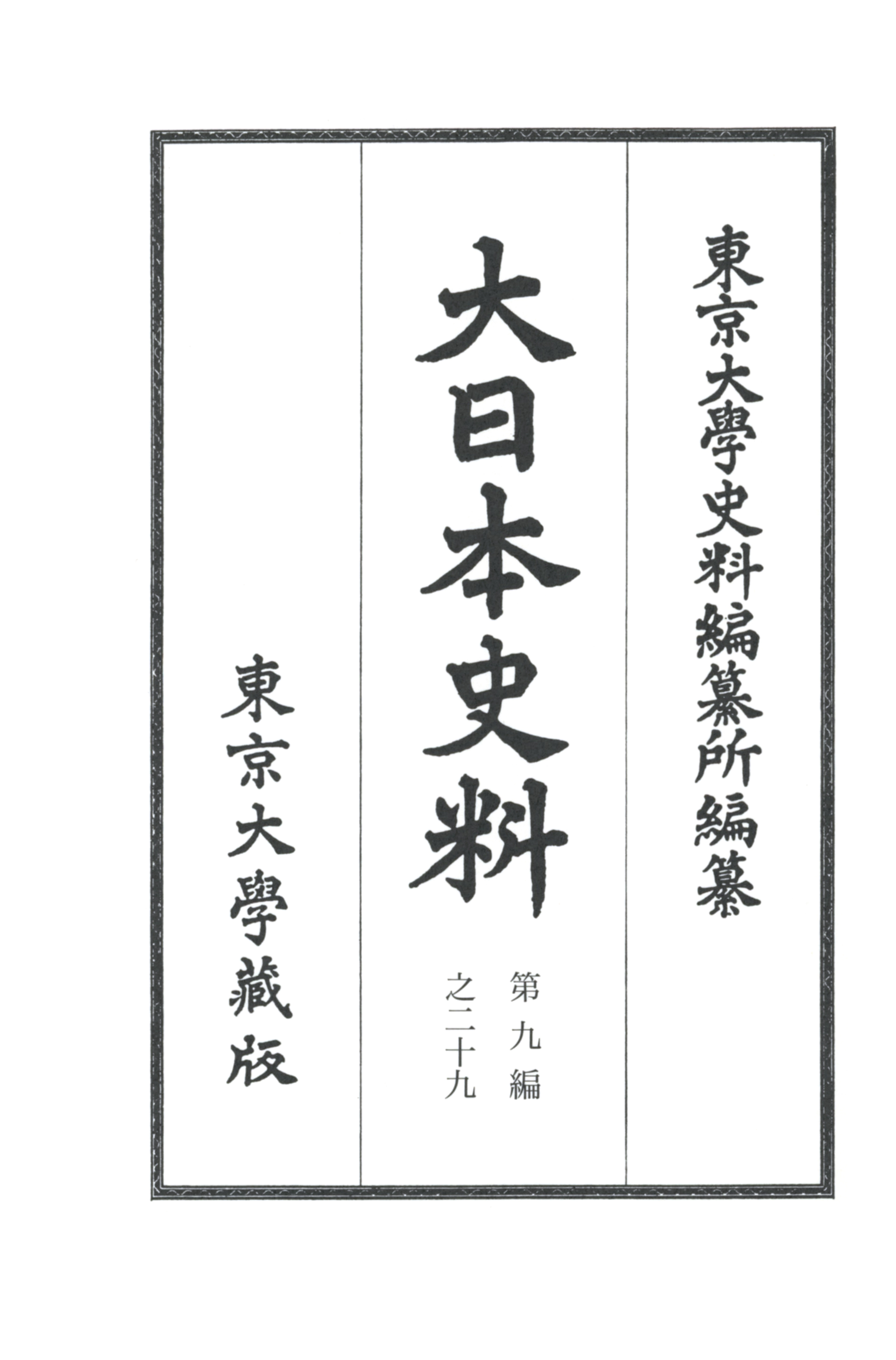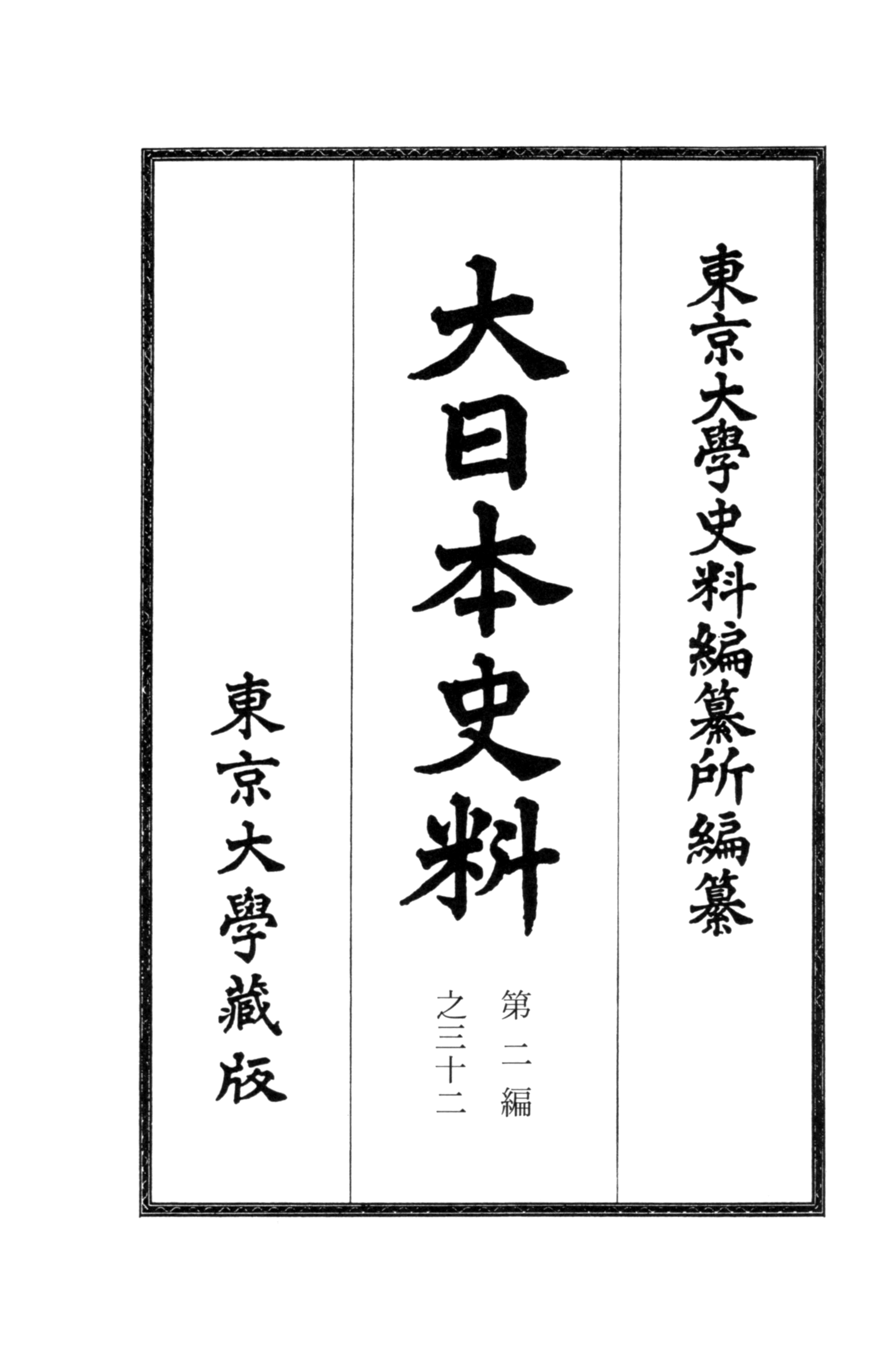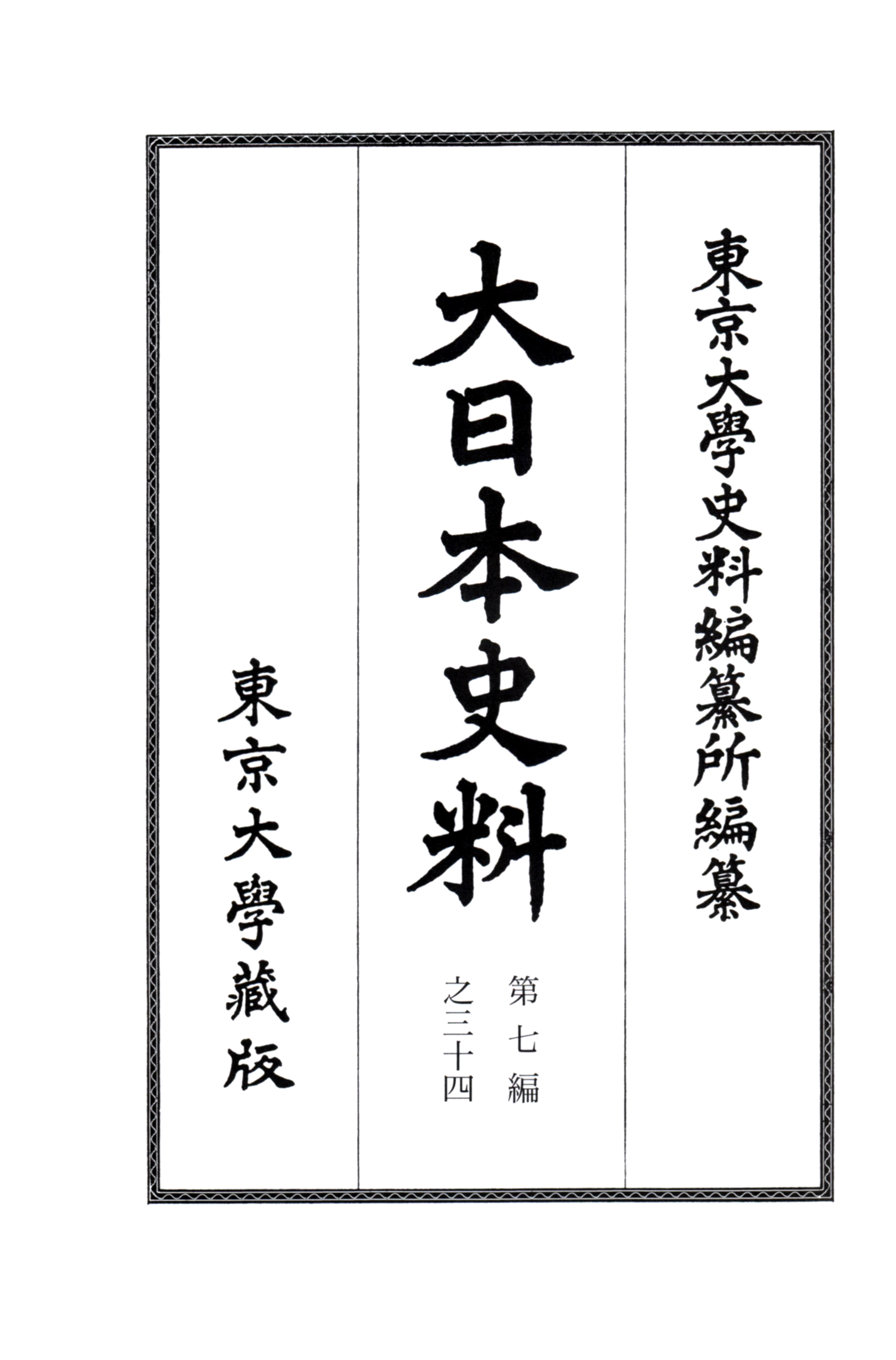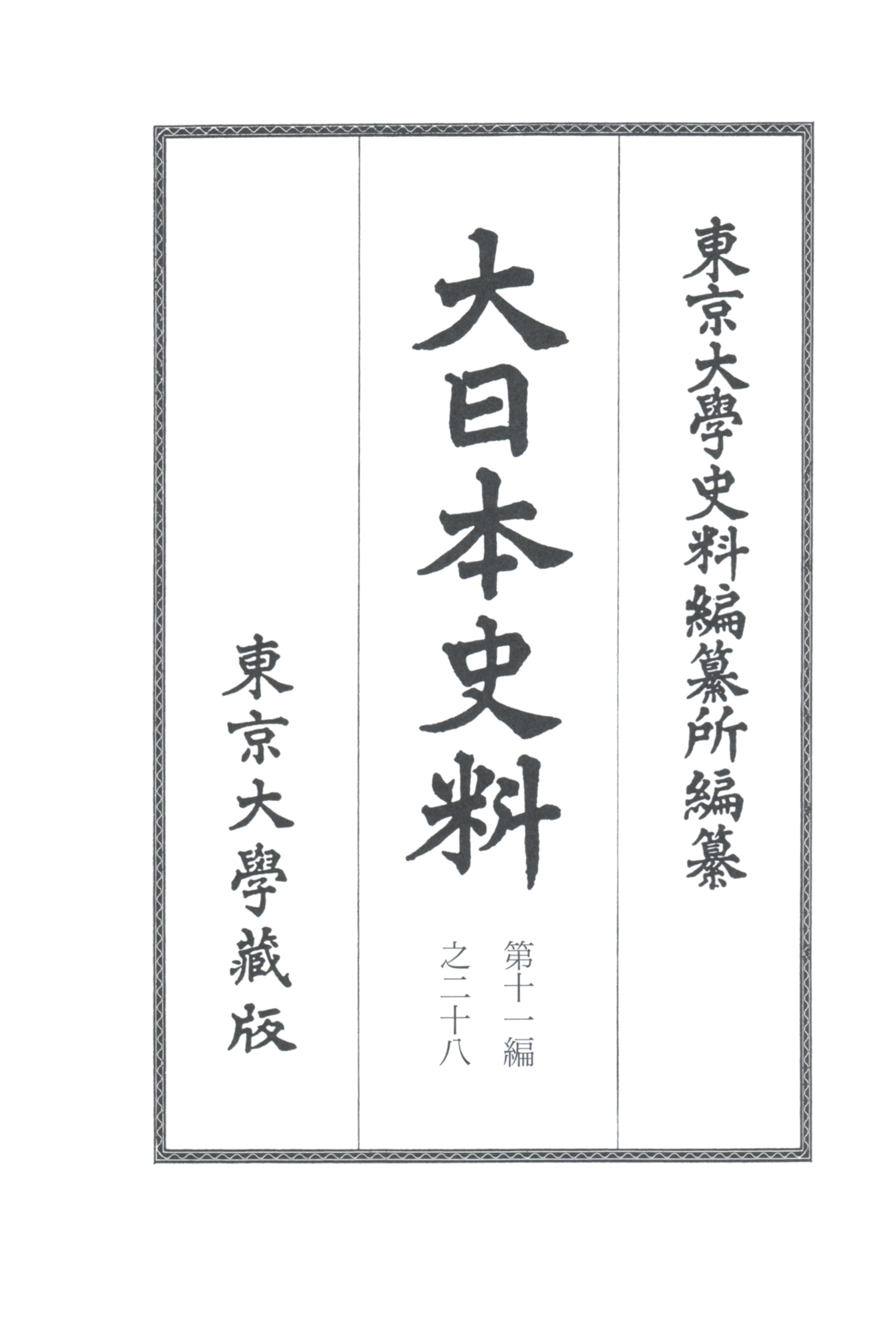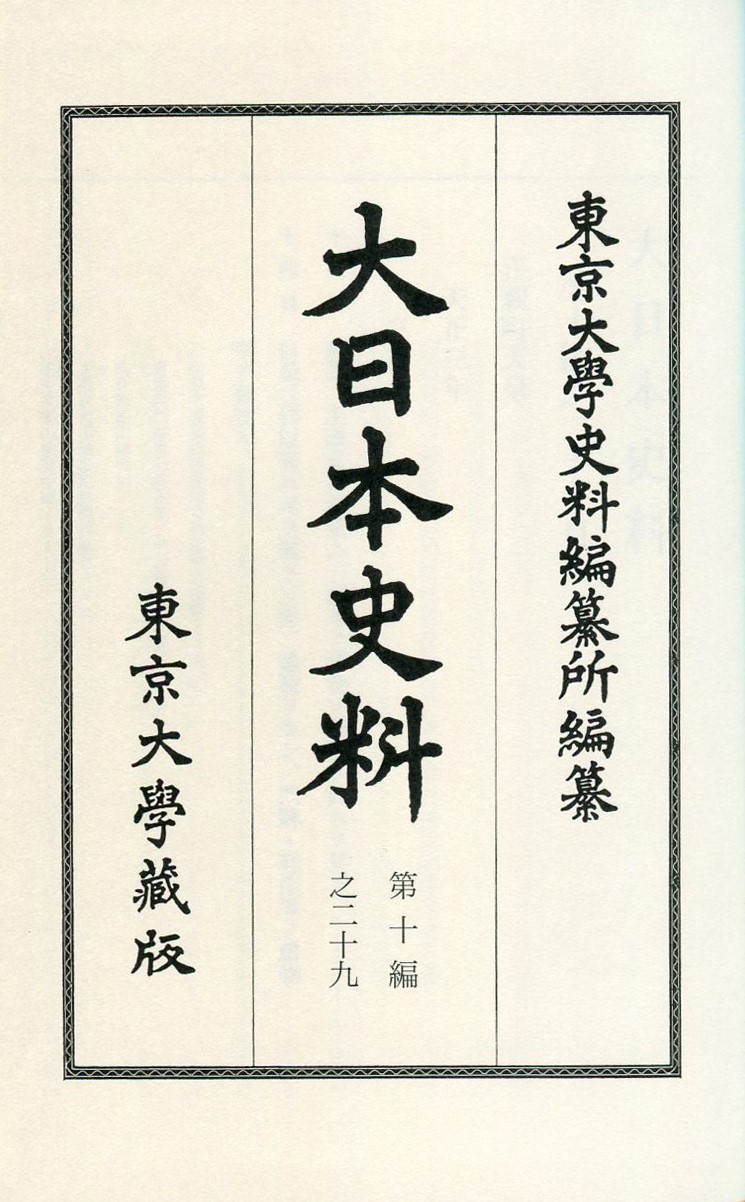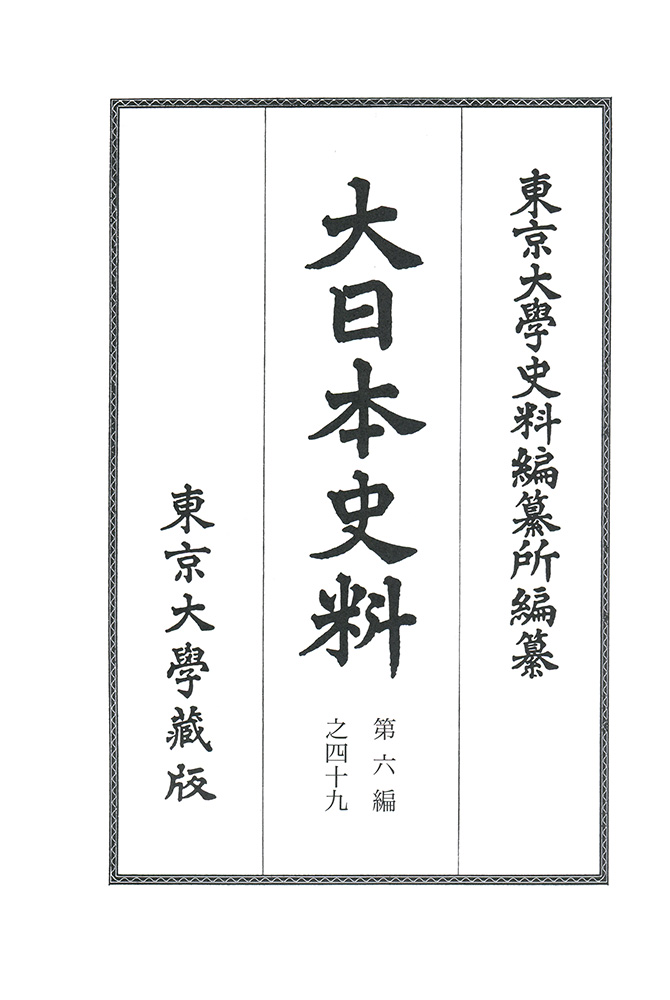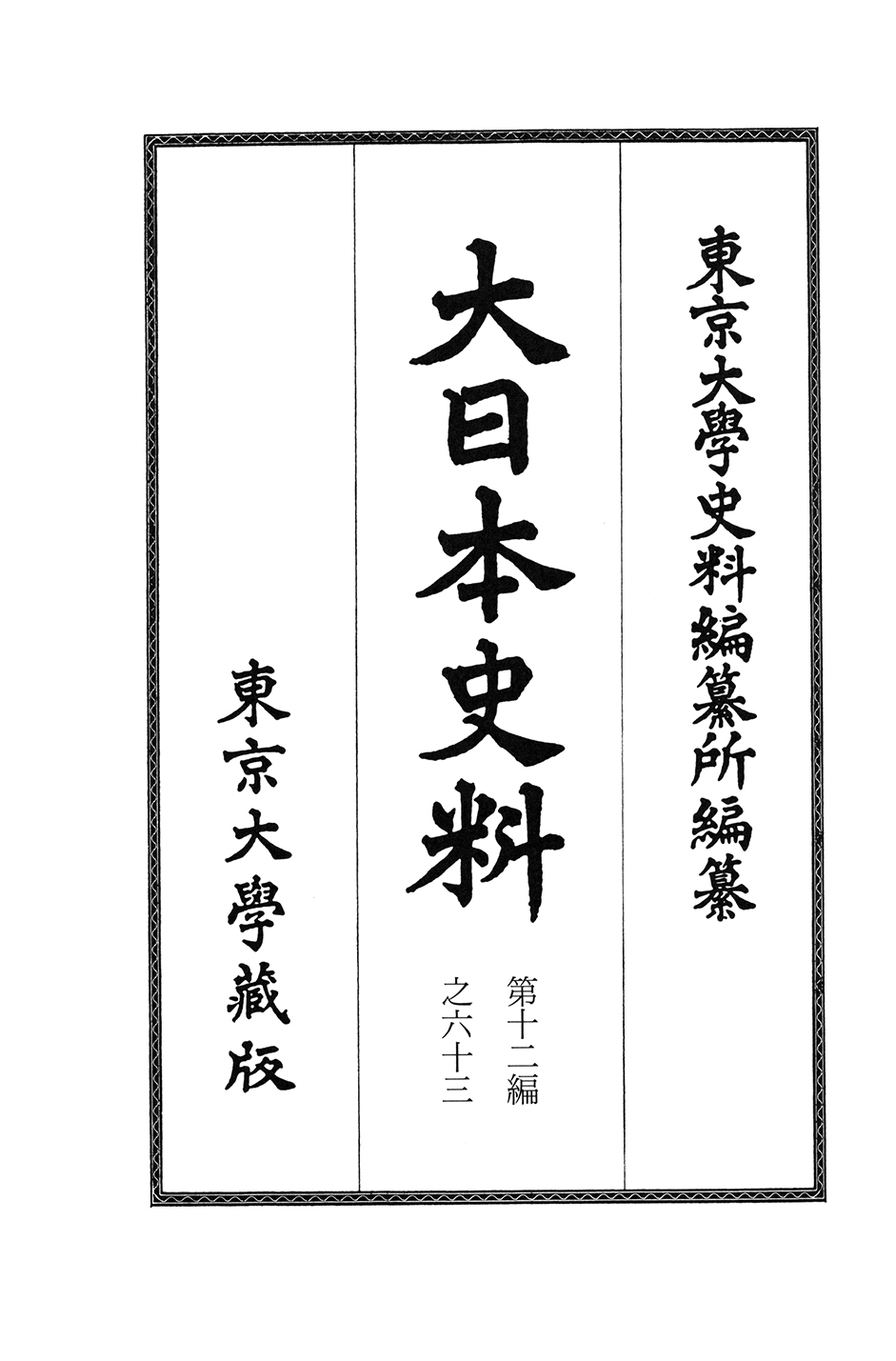
Title
Dai-Nihon Shiryo: Dai 12 no 63 (Chronological Source Books of Japanese History: Volume 12, Number 63)
Size
490 pages, A5 format
Language
Japanese
Released
April 28, 2023
ISBN
978-4-13-090613-5
Published by
University of Tokyo Press
Book Info
See Book Availability at Library
Japanese Page
Chronological Source Books of Japanese History is a collection of historical source materials in which important historical events are summarized in succinct outlines, followed by the relevant historical sources. One could think of this series as an enormous chronological table accompanied by the historical sources on which it is based. Currently, sources concerning the period from the middle of the Heian period to the early Edo period are being compiled in twelve parts. Volume 1 of Part 6 and Volume 1 of Part 12 were published in 1901, and since then more than 410 volumes have been published during the past 120-odd years.
Part 12 covers the early Edo period, from the 12th day of the second month of Keichō 8 (1603), when Tokugawa Ieyasu was appointed Barbarian-subduing Generalissimo, to the 20th day of the fourth month of Keian 4 (1651), when Tokugawa Iemitsu, the third shogun, died. Currently, the volumes covering Genna 9 (1623) are in the process of being compiled, and this volume covers events from the 21st day of the third month to the 16th day of the fifth month. There follows a summary of the main events.
Shogun Tokugawa Hidetada and his son Iemitsu resided in Kyoto from the sixth month to the intercalary eighth month of Genna 9, and in the seventh month Iemitsu assumed the position of shogun. Rumours that the shogun would be travelling to Kyoto had been circulating among daimyō since the start of the year. But in the second month there occurred an incident in which Matsudaira Tadanao, lord of Kita-no-shō in Echizen province, who was Hidetada’s nephew and also his son-in-law, was ordered by Hidetada to go into retirement on the grounds that he was a malcontent, disaffected towards the shogunate, and because there was a danger that this might develop into a civil war, it had been difficult to decide on a date for the shogun’s trip to Kyoto. It was decided to send Tadanao into exile in Bungo province, and on the 10th day of the fourth month the daimyō were finally notified that Hidetada and Iemitsu would be travelling to Kyoto in the second half of the following month. In conjunction with this decision, the rules to be observed by those who would be accompanying them were laid out on the 11th day of the fifth month. Among other events that could be thought to be directly or indirectly related to this visit to Kyoto, on the 7th day of the fourth month prayers were offered for Hidetada’s birthday at Gozan monasteries in Kyoto, and from the 22nd day of the fourth month Hidetada’s retainers were gradually reassigned to Iemitsu as a precondition of his succession to the position of shogun. In addition, on the 28th day of the fourth month Sonshō of the temple Daikakuji, who was Emperor Go-Yōzei’s fifth son, received initiation from his older brother Kakushin of the temple Ninnaji.
Some famous men who died during the period covered in this volume include Fukubara Hirotoshi, a chief retainer of Mōri Hidenari (lord of Hagi in Nagato province) who died on the 21st day of the third month; Tsukushi Hirokado, a Sengoku daimyō in northern Kyushu who died on the 23rd day of the fourth month; and Hon’inbō Sansa, who died on the 16th day of the fifth month. Fukubara Hirotoshi belonged to a family who had served the Mōri family as elders since the time when the family had been based in Yoshida, Aki province, and after the Battle of Sekigahara he devoted himself to the survival of the Mōri family by serving as an intermediary between them and the Tokugawa administration. He enjoyed the trust of Ieyasu, and it was even proposed that he be made a daimyō, but he is said to have declined and remained with the Mōri family. Tsukushi Hirokado, who was hemmed in between the powerful Ōtomo and Shimazu daimyō families, managed to survive as a daimyō by serving Toyotomi Hideyoshi, but after the Battle of Sekigahara he was deprived of his position and spent the remainder of his life as a hanger-on of Hosokawa Tadaoki and Tadatoshi, lords of Kokura in Buzen province. Hon’inbō Sansa was a monk of the Nichiren sect whose Buddhist name was Nikkai, but he was famous at the time as the bestgo player and is regarded as the founder of the Hon’inbō school of go, which is still known by the go title Hon’inbo to the present day. He took part in Hideyoshi’s and Ieyasu’s culture salons and was acquainted with many daimyō and court nobles. This volume includes not only sources recording the facts of the deaths of these men but also sources that allow us to gain an idea of their careers, notable achievements, and personalities, and so I hope that readers will retrace through these historical sources the lives of these famous men who lived through a time of great upheaval from the late Sengoku period to the early Edo period.
(Written by OIKAWA Wataru, Associate Professor, Historiographical Institute / 2023)



 Find a book
Find a book


